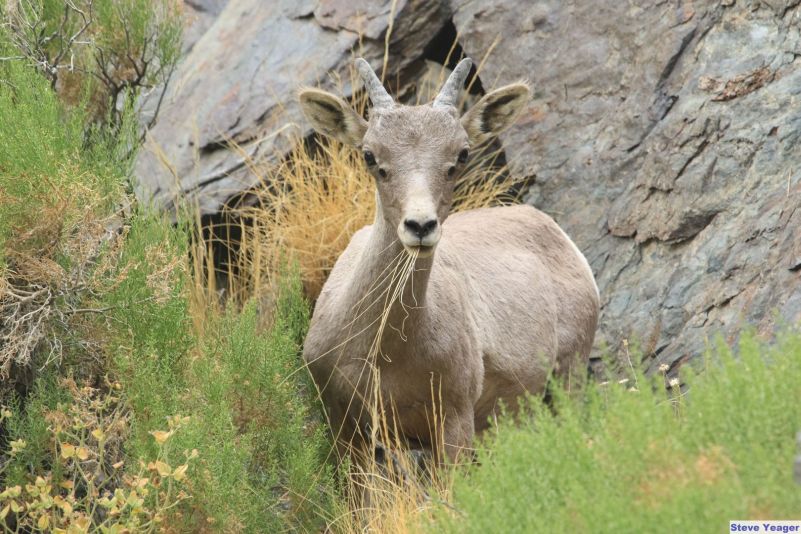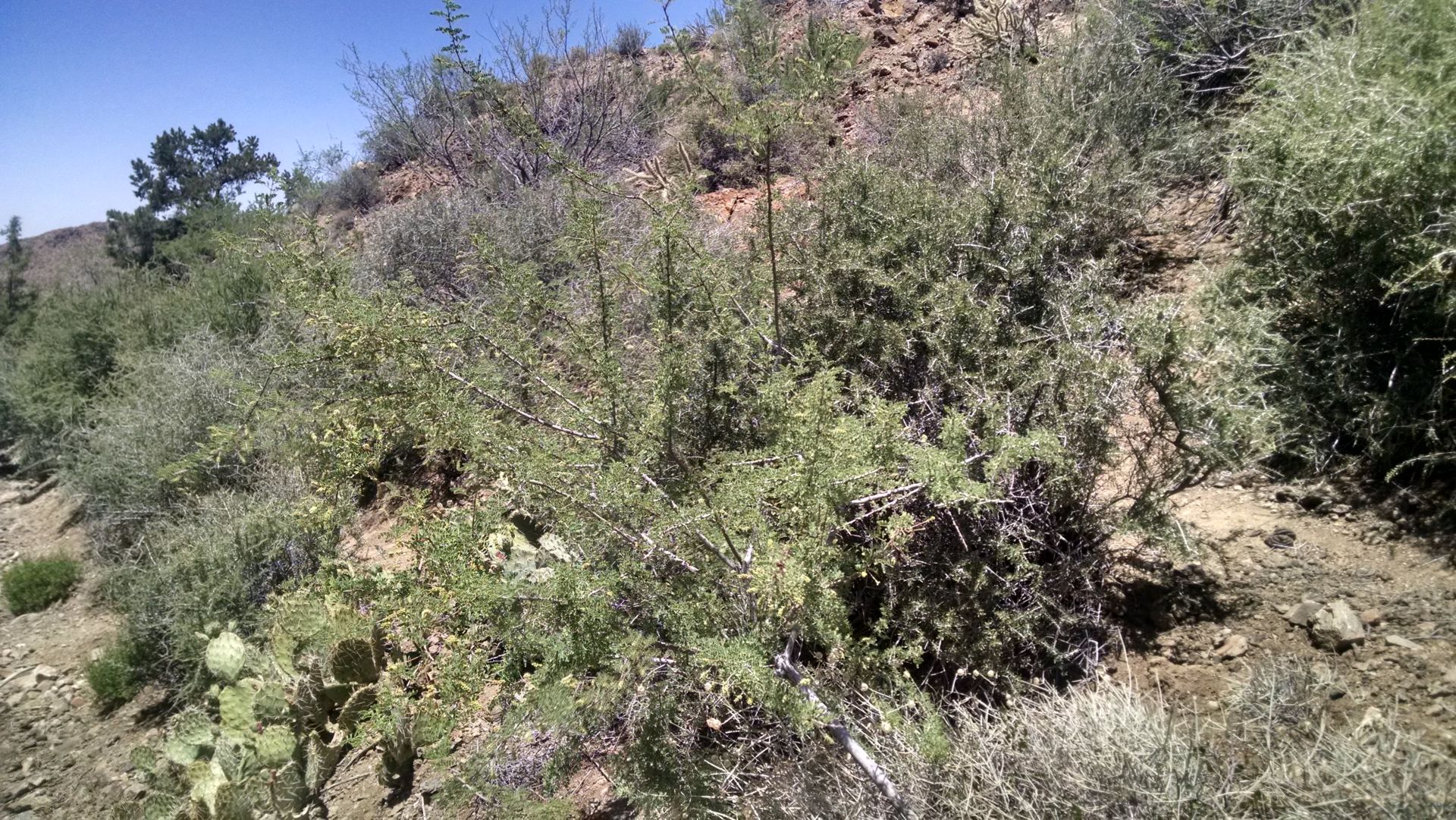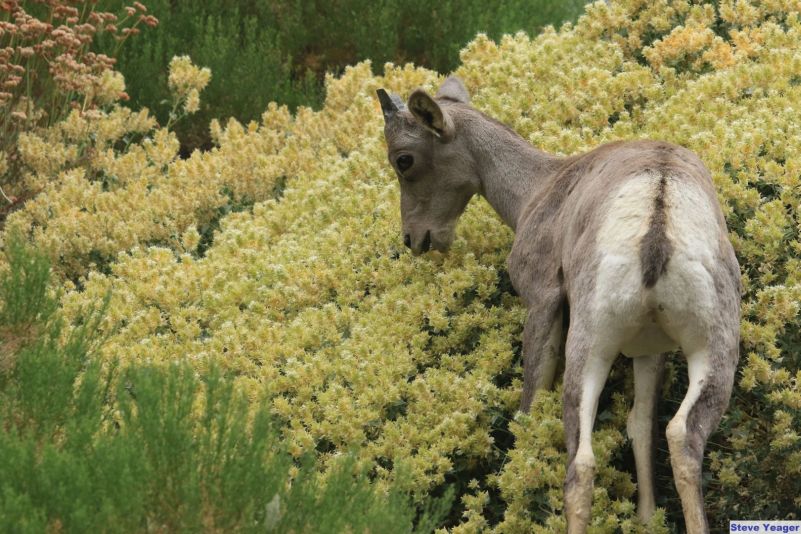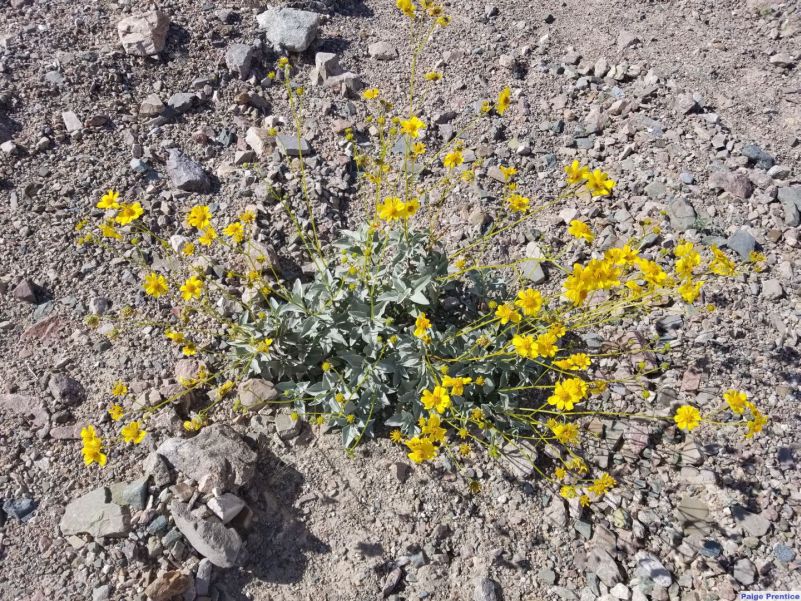Bighorn sheep are ruminant herbivores that possess a large rumen and reticulum relative to body weight. This permits flexibility in the plants they consume and allows the digestion of graminoids (grasses, sedges, and rushes) in all phenological stages.
Bighorn sheep select the most nutritious forage from what is available, so the composition of their diet varies seasonally and regionally. In years when adequate autumn-early winter rainfall initiates germination of annual plants, these species make up a large proportion of the diet during the growing season, and they may also be consumed in dried form around the beginning in May. Of particular note is catclaw acacia (Acacia greggii), a deep-rooted deciduous species in the pea family that maintains green leaves throughout the summer when other plant species have largely ceased growing. Bighorn sheep substantially enhance the nutritional quality of their diet in the hot season by consuming catclaw acacia where it is present.
 A White Mountain ewe eats grass. Photo by Steve Yeager.
A White Mountain ewe eats grass. Photo by Steve Yeager.
 Vegetation at the higher elevations of the Mojave. The middle-right bush is catclaw acacia (Acacia greggii), which is an important part of desert bighorns' diet in the summer months. The middle-left cactus is a prickly-pear (Opuntia spp.), which is only eaten by bighorn in times of desperation. CDFW photo by Danielle Glass.
Vegetation at the higher elevations of the Mojave. The middle-right bush is catclaw acacia (Acacia greggii), which is an important part of desert bighorns' diet in the summer months. The middle-left cactus is a prickly-pear (Opuntia spp.), which is only eaten by bighorn in times of desperation. CDFW photo by Danielle Glass.
Forage Growth and Bighorn Sheep
Vegetation growth in deserts is limited primarily by inadequate soil moisture. Desert bighorn sheep life history and demographic rates are greatly affected by rainfall patterns because diet quality is dependent on the amount of green growing vegetation in their habitat. Summer rainfall occurs largely as localized cloud bursts from monsoonal moisture that moves into the desert from southern sources, including the Gulf of Mexico and the Pacific Ocean. When those storms hit mountain ranges occupied by bighorn sheep, much of the water leaves as flash floods, while hot temperatures quickly evaporate what moisture penetrates the soil. Consequently, there is little increase in forage growth from most summer rain. Cool season storms produce soaking rains that are geographically widespread and are derived from moisture that moves across California mostly from the north and west. Because cooler temperatures preserve soil moisture and temporally extend its availability for plant growth, the major nutrient pulse for desert bighorn occurs in winter and spring.
In the Mojave Desert, the amount of October-April rainfall that enables forage growth during the winter-spring growing season is highly variable, and it correlates with bighorn lamb recruitment. Timing of rainfall in the cool season also plays a role. When cool season rainfall in the Mojave Desert is partitioned into key months of highest influence on diet quality, two distinct and biologically meaningful periods emerge: (1) early rainfall (October-November) that primarily enhances bighorn sheep nutrition through germination of annual forage species and initiation of growth of perennial forbs; and (2) rain in later months (January-February) that enhance diet quality later in the growing season.
The southernmost bighorn sheep habitat in California, in the Sonoran Desert, differs in the relationship between rainfall and diet quality. In washes, browse makes up the largest portion of forage, and growth peaks at the time of highest rainfall, which can fluctuate greatly. Catclaw provides a predictable source of nutritious forage during the hot season, but is lacking during the much of the cool season because it is deciduous. Additionally there are a variety of other deep-rooted perennial species that may provide a higher baseline of nutrient availability throughout the year in the absence of rainfall.
 A lamb munches on Atriplex spp. Photo by Steve Yeager.
A lamb munches on Atriplex spp. Photo by Steve Yeager.
 Brittlebush (Encelia farinosa) is found in most desert mountain ranges and is eaten by desert bighorn. CDFW photo by Paige Prentice.
Brittlebush (Encelia farinosa) is found in most desert mountain ranges and is eaten by desert bighorn. CDFW photo by Paige Prentice.